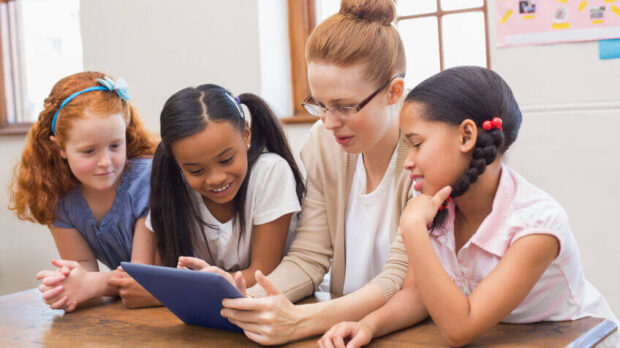Summer Slide + COVID Slide: An Intertwining Challenge in K-12 Education
As the period of the pandemic lockdown appears more fully in the rearview mirror for many, educators are faced with yet another unprecedented equation:
Summer Slide + COVID Slide = ???
Will these intertwining elements associated with learning loss create more of a challenge for K-12 students and educators in the upcoming school year?
Much attention has been paid over the years to the seemingly inevitable and significant learning loss that occurs over the weeks of summer—the Summer Slide. From decades of first-hand experience, educators know well that children enter the classrooms in August and September needing to brush up on skills from the previous year.
In 2017, David M. Quinn, associate professor of education at the University of Southern California, and Morgan Polikoff, associate professor of education at USC Rossier School of Education, highlighted data and research related to learning loss over the weeks of summer, including assertions that students lose an entire month’s worth of learning based on the decline in achievement scores. They also note that the decline is more significant in math than reading and that the loss appears more profound at the higher grade levels. The authors state learning loss is more profound for some demographics than others. Still, they confirm “…summer loss and summer gap-growth occur, though not universally across geography, grade level, or subject.”
The COVID Slide: Different Name With a Similar Impact?
While data related to COVID learning loss is limited to our current 3-year window, even at this point, educators are aware of the profound impact the unexpected disruption has had on students in their academic progression. For high school students, fears of career and college readiness are at the forefront of concern. But the overall impact the switch to remote learning had on K-12 students is now noticeably tied to student progress and status before the shift occurred.
“The in-school/out-of-school [difference], that’s important, that’s a factor. But it’s more about where kids started,” said Matt Dawson, the director of efficacy and implementation research at Curriculum Associates and the author of the study cited in Sarah Schwartz’s March 8, 2022 Education Week article What’s Behind the COVID Academic Slide? Some Things Mattered More Than Remote Learning. “Where students were before the pandemic is really, really important to take into account. The kids who were already struggling before the pandemic, they’re still struggling.”
The Curriculum Associates study says the students who were behind or at-risk before the pandemic were—and continue to be—in need of support as a result:
“The study took into account students’ initial placement level at the beginning of the 2020-21 school year. In reading, students who were on grade level stayed on track, continuing to improve throughout the pandemic—whether they were in-person or remote. But students who were two or more grade levels behind at the beginning of the year grew less than they had pre-COVID.”
Enhancing Student Success
In this way, summer learning loss as K-12 has been experiencing for years and COVID learning loss are impacting students from demographics many districts were already anticipating—those students who, for a number of reasons, benefit from additional instruction and resources. This solidifies the importance of equity and accessibility in resources provided by schools or districts for use at school and home to meet the needs of their students. Allison Socol, assistant director of P-12 policy at EdTrust, encourages districts to make the most of funding earmarked to meet these needs.
“Educators have an opportunity right now because they have this unprecedented investment in the form of the American Rescue Plan,” Socol said. “These findings really drive home the importance of using those additional resources to meet the needs of students who were already clearly in need of additional supports before the pandemic and whose learning has been greatly impacted by the last two years.”
Districts around the country are using ARP-ESSER funding to support teachers and students to “safely reopen and sustain in-person instruction, combat learning loss, and address students’ mental health needs.” Now that 99% of P-12 schools are back to in-person instruction, schools and districts are making use of those dollars in several ways, including a significant portion allocated to “combat learning loss through student support programs such as evidence-based tutoring, expanded after-school and summer learning and enrichment programs.”
As educators wrap up the 2021-22 year and look toward 2022-23, we’ll keep our eyes on the numbers, the funding, and what makes the most sense to help students achieve success.
Is your school, district, or organization looking for a way to provide equitable and affordable online tutoring to address learning loss through 1:1 academic support across 122+ subjects? Skooli provides unlimited learning opportunities through instant, on-demand, drop-in access to professional teachers – anytime and anywhere, all from a safe and secure online learning environment.
We’d love to connect and talk through ways we can help! Connect with us here. Let’s work together to enhance student success!

